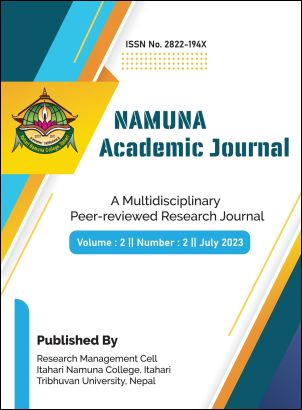Rice and its Multiple Identities: A Discursive Study of Paddy Cultivation in Nepal and Himalaya
DOI:
https://doi.org/10.3126/naj.v2i2.58811Keywords:
Identity of rice, Position of paddy farmer, Political ecology, Discourse analysis, Nepal, HimalayaAbstract
This paper encounters the problem of the identity of rice and paddy farmers in Nepal and in the Himalayan region. It examines discursive practices in three different regimes of knowledge that constitute rice and paddy cultivation in Nepal and the Himalayas; mythological, socio-cultural, and Techno-political. For the analysis, it has brought descriptions of materials from the comprehensive compendium on ‘Rice Sciences and Technology in Nepal’, (2017). The compendium is the major source of materials or ‘corpus of the statement’ in relation to each of the domains of knowledge in paddy cultivation for analysis. The analysis exposes the meanings and identities of rice and paddy farmers and farmers’ positions in each of the regimes. This paper argues that the contemporary discourse of rice/paddy cultivation is dominated by the techno-political regime of knowledge which has specific implications for the production of the identity of rice and paddy farmers. Furthermore, this mediation reproduces rice as a commodity to sell in the open market and paddy farmers as the passive recipients of the information and skills from the modern agriculture agencies like the state, scientists, media, and agro-companies. It utilizes Foucauldian Discourse Analysis (FDA) method while approaching the different domains of knowledge. The argument is based on the ‘non-essentialist’ theory within the anthropological framework of political ecology as proposed by a senior post-modern anthropologist Arturo Escobar.




